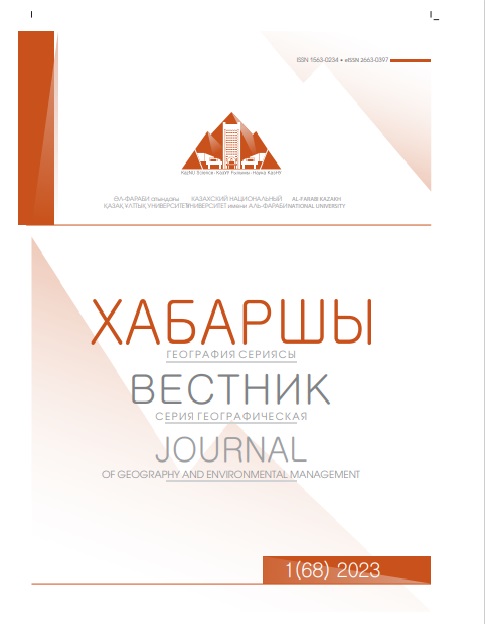Modern relief formation of the northern Aral region under the conditions of the sea regression
DOI:
https://doi.org/10.26577/JGEM.2023.v68.i1.01Keywords:
Northern Prearalie, climate aridization, relief-forming processes, sea regression.Abstract
The study aims to determine the predominant types of relief formation processes under the conditions of sea regression and the impact of an arid climate.
The research methodology combines field observations, interpretation of remote sensing data, digital photogrammetric analysis of aerial photographs, and data processing in GIS.
As a result of the study, a map of the modern land cover of the studied area of the Northern Aral Sea region was created. 13 types of cover were identified: wastelands (unused lands), lands occupied by settlements, arable land, wetlands, grasses, steppe with sparse vegetation, water surface, drained bottom of the Aral Sea, fixed sands, shifting sands, saline, and takyrs. The absence of vegetation indicates active gravitational processes and wind erosion. Several villages have been identified that are subject to the adverse effects of mobile sands; these are Kosaman, Akespe, Akbasty, Bogen, etc. In the villages of Akespe and Akbasty, residential houses and household premises of residents are covered with mobile sands. The relative height between the base and the crest of the dune, on average, is 2 meters. The development area of shifting sands in Akespe village is 1.68 km2, and in the village of Akbasty is about 1.62 km2. The values of the load factor of conditional cattle on pastures in the study area, where a high coefficient is noted in the village of Akbasty, are calculated. The development and implementation of environmental management measures in the conditions of adaptation of the environment and human activity to the increasing processes of climate aridization and its consequences become relevant.



